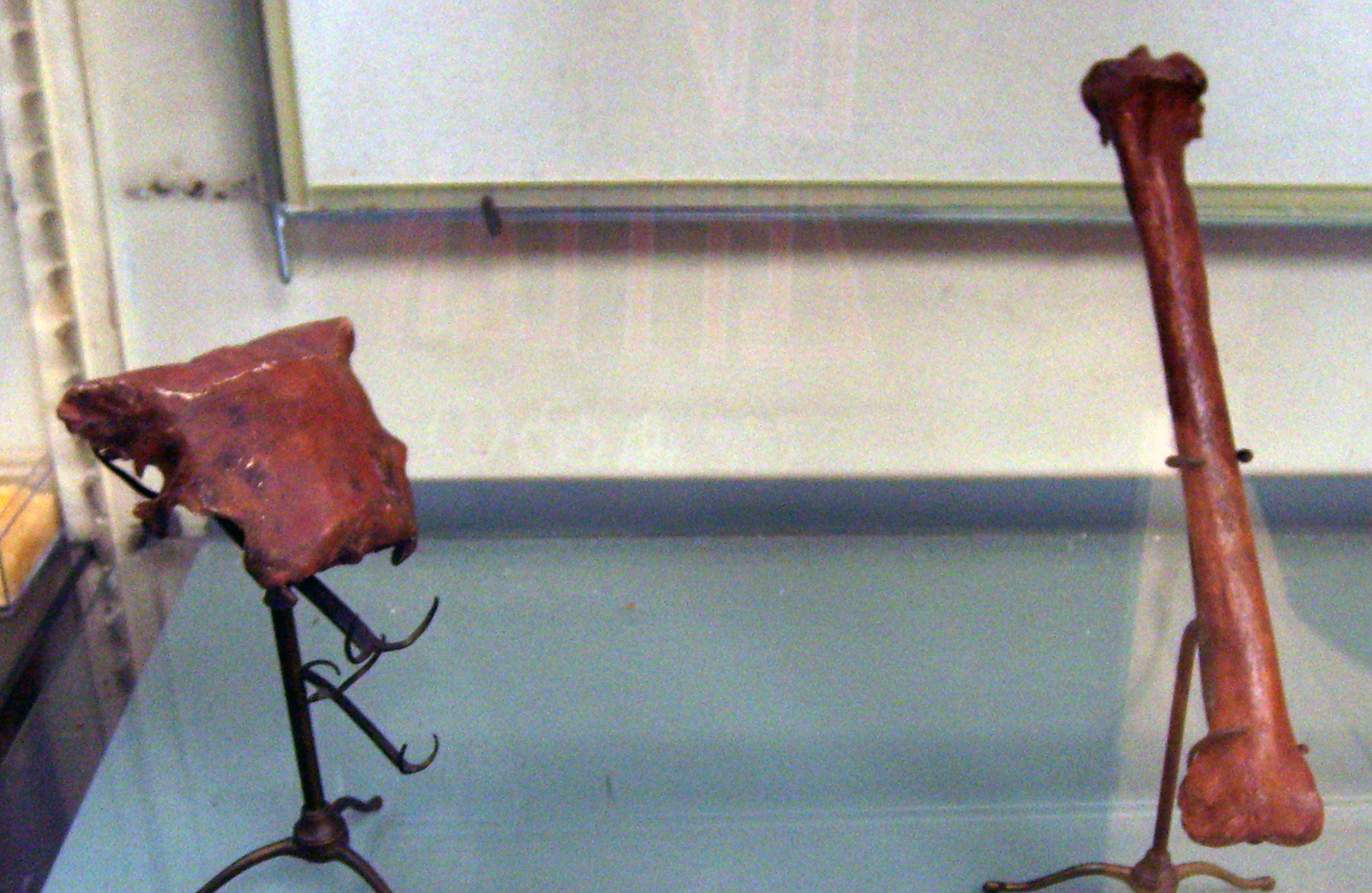- Sylviornis
Taxobox
name = "Sylviornis"
fossil_range =Holocene

image_width = 250px
image_caption = "Sylviornis neocaledoniae" skull,Muséum national d'histoire naturelle , Paris
regnum =Animal ia
phylum = Chordata
classis = Aves
ordo =Galliformes
familia = Sylviornithidae
familia_authority = Mourer-Chauviré & Balouet,2005
genus = "Sylviornis"
genus_authority = Poplin,1980
species = "S. neocaledoniae"
binomial = "Sylviornis neocaledoniae"
binomial_authority = Poplin,1980 "Sylviornis" is an
extinct genus of galliform bird containing a single species, "S. neocaledoniae", or erroneously, "New Caledonian Giant Megapode". Technically, the latter is incorrect because it has recently been found not to be amegapode , but the sole known member of its own family, the Sylviornithidae; at the time of its description, it was believed to be aratite . "Sylviornis" was never encountered alive by scientists, but it is known from many thousands ofsubfossil bones found in deposits, some of them from theHolocene , onNew Caledonia and the adjacent Île des Pins. "Sylviornis" was a huge, flightless bird, 1.70 meters long altogether, and weighing around 30 kg. It had a large skull with a high and laterally compressed beak surmounted by a bony knob. Its legs were rather short, but had strong toes with long nails. The skeleton has a number of peculiarities and differences that make "Sylviornis" stand apart from all other known birds: theclavicle s were not fused to afurcula , the number of caudalvertebra e was very high, and the ribcage and pelvis were almostdinosaur ian in appearance. The wings were reduced to small stubs.A large proportion - up to 50% in some deposits - of the remains found were from juvenile animals. Thus, it has been theorized that "Sylviornis" had a clutch of at least two, more probably closer to 10 eggs, and that the average lifespan was not much more than 5-7 years, which would be extremely low for such a large bird. Apparently, the bird did not incubate its eggs but built a mound similar to the megapodes. Tumuli on the Île des Pins which were initially believed to be graves were found to contain no human remains or
grave goods , and it has been hypothesized that they were in reality the incubation mounds of "Sylviornis". As these mounds are up to 5 m high and 50 m wide even after nearly 4 millennia, they seem too large to have been made by theGiant Scrubfowl , an extinct New Caledonian species of megapode.Little can be said about the lifestyle of "Sylviornis". It was probably a slow-moving browser, and the structure of the bill and feet suggest that roots and tubers it dug up formed a major part of its diet.
Extinction
The bird was hunted to extinction by the
Lapita ancestors of theKanak people, who settled New Caledonia around1500 BC . Predation by feral dogs and pigs probably also played a part. The legacy of the Sylviornis persists in Kanakoral history in the form of stories giving a rough description of the bird and some of its habits. A native name was "du".ee also
*
Late Quaternary prehistoric birds
*Island gigantism References
* Mourer-Chauviré, Cécile & Balouet, J. C. (2005): Description of the skull of the genus "Sylviornis" Poplin, 1980 (Aves, Galliformes, Sylviornithidae new family), a giant extinct bird from the Holocene of New Caledonia. "In": Alcover, J. A. & Bover, P. (eds.): "Proceedings of the International Symposium "Insular Vertebrate Evolution: the Palaeontological Approach". "Monografies de la Societat d’Història Natural de les Balears" 12: 205-118.
* Poplin, François (1980): "Sylviornis neocaledoniae" n. g., n. sp. (Aves), ratite éteint de la Nouvelle-Calédonie. "Comptes Rendus de l'Academie des Sciences Paris sér. D" 290: 691-694 [Article in French]
*Balouet, Jean Christophe; Olson, Storrs L.: "Fossil Birds from Late Quaternary Deposits in New Caledonia" [http://si-pddr.si.edu/dspace/bitstream/10088/5164/1/SCtZ-0469-Hi_res.pdf PDF, online]
Wikimedia Foundation. 2010.
